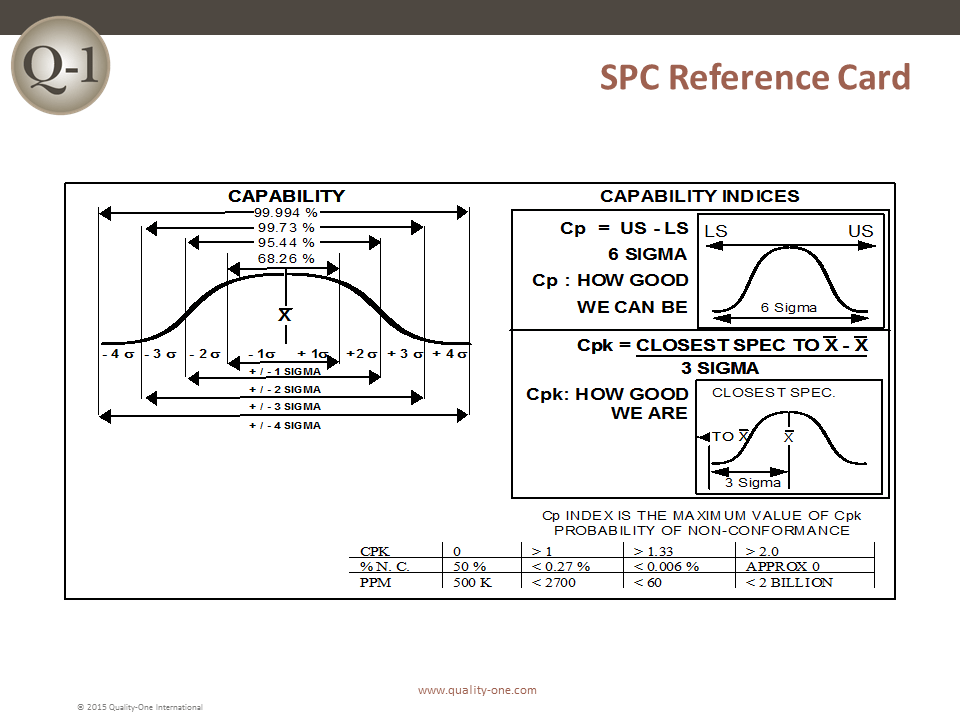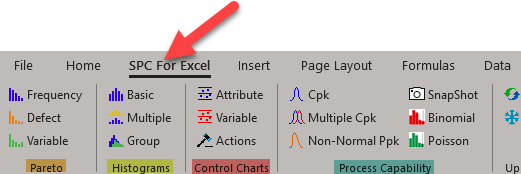
QDM addresses this issue by calculating your metrics and reporting them as they are collected. They get the information you need to the people who need it right when it is needed. This is why Real-Time analytics are so important. Having to wait to analyze large amounts of data or hand off stacks of data to a specialist to pour through and crunch eliminates the primary value of having a system. Information about your processes only has value if it is received early enough to make changes to resolve the problem.

The greatest issue most SPC systems deal with is time. These unpredictable and uncommon (hopefully!) sources are the target for an SPC system to identify so that they may be resolved.
Special Cause Variation - These variation sources can be assigned to a cause other than the process itself. This variation comes from normal sources and are present in standard processes. Common Cause Variation - The 'noise' in the process. The variation quality professionals are looking for is Special Cause variation, which is caused by assignable sources of variation and can be removed through action. This is a simple way of determining whether the variation is natural to the process, as in normal distribution of variation expected within the process. Variation in manufacturing is assigned to one of two sources - Common or Special. What Can You Control? - Understanding the Two Sources of Variation Using this kind of Quality Intelligence gives manufacturers the time needed to resolve problems before bad parts are created, reducing scrap and downtime. By monitoring these factors, the quality team can see if any parts are being built out of specification (non-conformance) or if the overall process itself is trending towards one of the specification limits, showing possible wear on machines, or instability in the process. This form of manufacturing visibility is important to both monitor the existing manufacturing process and make improvements for the ongoing process.įor example, a system utilizing 30 part samples from a manufacturing line can set up Trend Charts to display the variation in the measurement over time of those samples. Once collected, it is consolidated and analyzed to evaluate the quality performance of the manufacturing process and make determinations about future quality. This data is collected as both part and process measurements. SPC is applied in manufacturing through the use of inspection and measurement data. SPC utilizes a number of tools from control charts, trend charts as well as statistical metrics like Cp and Ppk. SPC is the use of statistical methods to determine the variation of a process or its outputs in order to maintain statistical control and improve the overall process capability. To get a more in-depth understanding of these best practices, check out our recent webinar with Inductive Automation sales engineers Mara Pillott, Dereck Saunders, and Kent Melville.What is Statistical Process Control - SPC? Statistical Process Control (SPC) Defined ☐ Implement security measures on components Because Ignition was developed with security at the forefront, it gives you all the tools to create a system that is as secure as it needs to be. Security is one facet of a SCADA system that will only become more critical as time goes on. It’s vital to recognize that certain alarms require more immediate attention but every alarm could use more information. Here’s an understatement: alarms are important! Alarms are instrumental in preventing downtime, but a poor setup greatly diminishes their usefulness. ☐ Use expression structures when there are multiple properties. ☐ Monitor all property changes used in transforms. Luckily, Ignition allows you to expedite development by leveraging reusable structures and tools. Below, we’ve compiled a checklist of common mistakes and corresponding solutions to review before you start building so you can get your projects developed quickly and running as efficiently and securely as possible.īuilding visualization can be tedious and slow if each asset is created individually. Fortunately, Ignition gives you the tools to not only fix those mistakes, but turn them into strengths when you’re developing projects in the future. No matter how much experience we have, we all make mistakes sometimes. Ignition Exchange Community-made Ignition resources. Ignition Maker Edition Made for hobbyist and educational use. 

Ignition Edge Made for field and OEM devices at the edge.







 0 kommentar(er)
0 kommentar(er)
